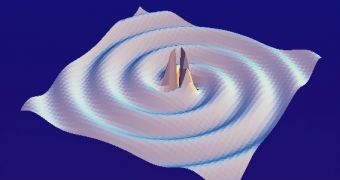Einstein's famous quote: "Two things are infinite: the universe and human stupidity; and I'm not sure about the universe" is not exactly accurate. He wasn't sure of another thing, the existence of the gravitational waves.
In fact, he repeatedly changed his mind regarding the existence of this phenomenon, although he theorized them, then denied their existence, then proclaimed it again. What are these waves and could we ever demonstrate their existence "beyond reasonable doubt"?
They are fluctuations, or ripples, in the curvature of space-time, which travel as a wave, outward from a moving object or system of objects. For example, an accelerating mass loses its entire energy when exceeding certain levels, which creates gravitational module in the form of a ripple.
These waves are thought to be formed by binary star systems, where the two stars in the binary are white dwarfs, neutron stars, or black holes. Unfortunately, theoretical models have failed to prove the existence or nonexistence of these waves, although they are considered extremely important for physics and cosmology.
"In the broader universe these waves may play a role in the later development of star systems," said University of Arkansas professor Daniel Kennefick, who wrote a book on the subject, Traveling at the Speed of Thought: Einstein and the Quest for Gravitational Waves .
"It's possible that when pulsars, which start out spinning very rapidly after they are created from the collapse of a normal star, lose a lot of their spin with time, the reason is that they are losing energy to the gravitational waves they emit. Understanding these waves could lead us to a great deal more knowledge about the nature of these dying stars."
Kennefick thinks that proof of their existence could be out there, although hard to detect with our telescope. He says that some observations seem to demonstrate these waves by analyzing their effects, instead of trying to detect them directly.
"As binary stars lose energy and decay, we can see that their orbital period decreases because the two stars are getting closer to each other. Each orbit takes less and less time, and when we measure that change, we find it agrees very precisely with Einstein's 1918 calculation," he concluded.

 14 DAY TRIAL //
14 DAY TRIAL //